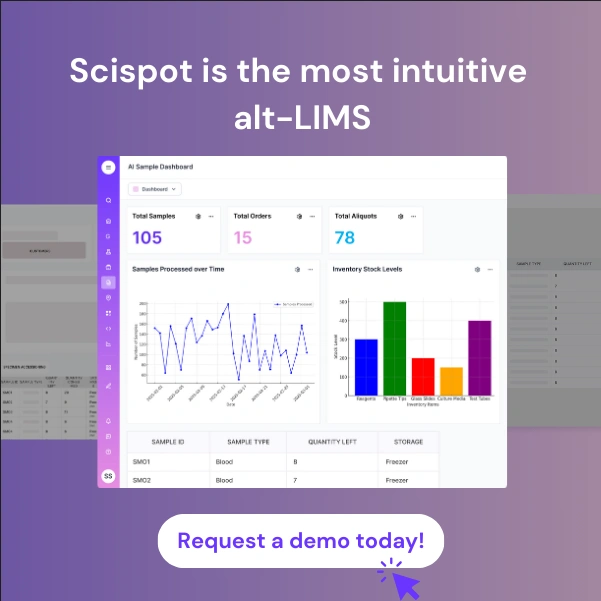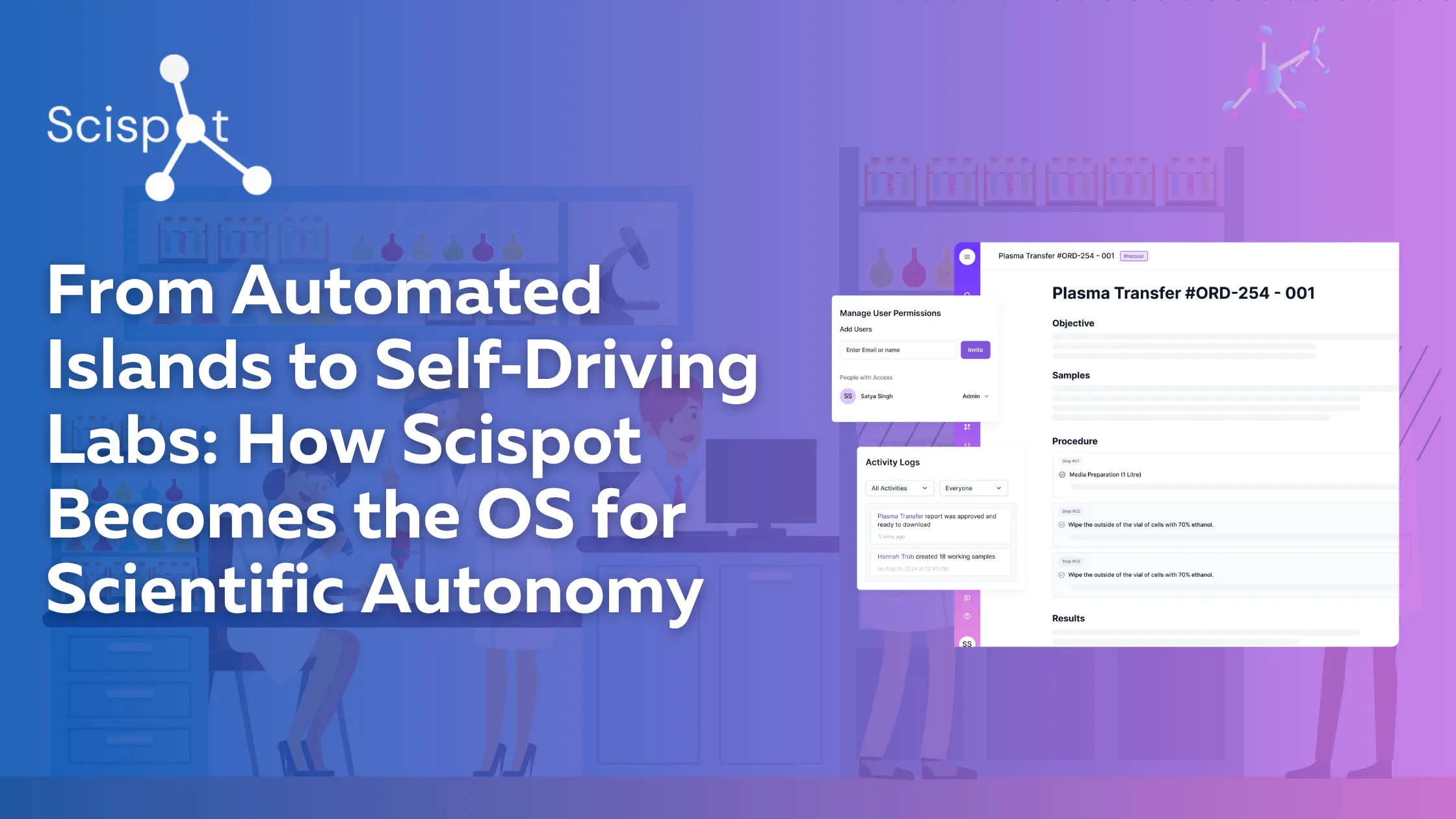Laboratory automation is changing fast. The center of gravity has shifted from "buy a robot" to "build a connected ecosystem." Instruments, software, and data now act like parts of one living system. That system learns, adapts, and scales with your science. It's the difference between a machine that runs scripts and a lab that thinks in loops.

What "self‑driving" really means
A self‑driving lab closes a simple loop: plan → run → measure → learn → repeat. AI designs the next experiment. Robots execute it. Sensors and analytics score the result. Orchestration keeps the pieces in sync. When this loop turns without stalls, discovery speeds up by orders of magnitude. We have real proof. Berkeley Lab's A‑Lab ran 355 experiments in 17 days and synthesized 41 previously unreported materials by keeping the loop tight and autonomous. That is not a demo; it's production science.
You can see the shift beyond materials, too. Remote "cloud labs" such as Emerald Cloud Lab and Strateos let scientists program and run wet‑lab work from a browser. These facilities stitch robots, inventory, QC, and data together with software control, so one scientist can act like "a team of many hands." This model turns the lab into a programmable service and proves that connected automation is no longer a pilot project.
.png)
Why now: the stack has matured
Three changes make self‑driving labs realistic.
First, orchestration has grown up. Schedulers and lab‑wide orchestrators coordinate devices, people, and data in real time. Biosero's Green Button Go is a good example of how labs design multi‑instrument workflows, handle errors, and simulate runs before pressing "Go." This is the conductor's baton for your instruments.
Second, inline quality control is standardizing. Automated liquid handling is only as good as its volume accuracy. ISO 23783 now defines how to verify volumetric performance of liquid handlers. Tools like Artel's MVS (photometric) and Hamilton's LVK (gravimetric) bring quick, traceable verification into daily runs. Think of it as pipette calibration for the robot age—built into the workflow, not tacked on afterward.
Third, the AI and standards layers have teeth. On one end, AI is moving from hype to operation. The FDA even launched an internal LLM, Elsa, to speed parts of its review work—evidence that regulated ecosystems are adopting AI with governance. On the other end, lab‑tech standards such as SiLA 2 (device control), Autoprotocol and XDL (experiment description), and AnIML (analytical data) reduce vendor lock‑in and help automation talk across brands. Together they create the rails for closed‑loop science.
Market signals support the shift. Multiple independent forecasts project the lab‑automation market roughly doubling by the early‑2030s, led by North America. That is not just more robots; it is investment in ecosystems that connect them.
The bottlenecks ahead are human, not just technical
The biggest risks now are knowledge, standards, and trust. Labs need training so more teams can design dynamic workflows. They need stronger data integrity and GxP readiness as automation scales. ALCOA(+) principles—attributable, legible, contemporaneous, original, accurate, plus complete, consistent, enduring, and available—are becoming table stakes in digital labs, and recent FDA materials keep those expectations front and center. The message is clear: autonomy must be auditable.

Enter Scispot: the Lab OS that makes self‑driving practical
A self‑driving lab needs an operating system, not a patchwork of scripts. Scispot plays that role. It unifies ELN, LIMS/LIS, SDMS/data lake, workflow automation, and an API‑first integration layer into one "digital brain" that instruments, apps, and AI agents can trust.
Scispot's LabOS centralizes experimental context, instrument telemetry, and sample state. It tracks inventory and freezer maps, attaches audit trails and e‑signatures, and keeps data FAIR and analysis‑ready. Because the system embeds Jupyter and an AI lab assistant, you can codify QC checks, plate maps, or analyses as notebooks that run on events—say, "file arrived from LC‑MS," "assay plate completed," or "threshold failed." The result is a living backbone that connects wet lab, dry lab, and compliance in one plane.
Scispot is API‑first. Its SDK, webhooks, and GLUE connectors make it straightforward to plug in instruments, cloud storage, scheduling software, or analytics. The platform calls out compatibility with HL7/ASTM messaging, SOC 2/HIPAA features, and hundreds of prebuilt connectors. That matters because a self‑driving lab succeeds or fails on integration cost and speed. Scispot's integration pages and API materials show the intent: one place to ingest, harmonize, and route every data stream in the lab.
Critically, Scispot sits above robots and schedulers. It does not lock you to a single vendor, so you can bring an Automata LINQ bench, an Opentrons Flex, or a classical articulated‑arm workcell and keep the same data layer and workflows. When orchestration tools evolve—or you add a cloud‑lab partner—your OS stays the same. That is how you de‑risk autonomy.

What this looks like in practice
Start with one high‑value workflow. Use Scispot to model samples, reagents, and metadata and to define the data contract for each step. Pull instrument data into LabOS in real time. Trigger Jupyter pipelines that run QC, calculate curves, or flag anomalies the moment the file lands. Let your scheduler handle device timing while Scispot handles state, lineage, and logic. Add a decision model—Bayesian optimization or active learning—so the next batch is planned from today's results. Now your lab is turning the loop.
This is not hypothetical. Scispot's own materials describe workflows where Labsheets templates import data, JupyterHub scripts auto‑generate aliquots and plate maps, and the API imports instrument outputs for automated QC and analysis. The pieces needed for autonomy—events, webhooks, notebooks, and harmonized data—are native to the platform.

The rest of the ecosystem plugs in
A modern self‑driving lab is modular by design. Compact workcells and generalist robots reduce footprint while increasing flexibility. Community standards keep integrations maintainable. When you need extra capacity or specialized tools, you can burst to a cloud lab and still keep your provenance and analysis inside Scispot's OS. This gives you the best of both worlds: your controls and models stay inside your walls; your experiments can run anywhere.
The AI layer is getting richer, too. Pharma's collaborations underscore it. Sanofi, Formation Bio, and OpenAI have been co‑building AI‑powered software to compress timelines. Eli Lilly's TuneLab opened internal models to partners, aiming to democratize access to expensive discovery AI. As these tools become common, the lab OS that feeds them high‑quality, contextualized data becomes the real leverage point.
Quality is baked in, not bolted on
Liquid handling remains the heartbeat of many workflows, so volume verification must be routine, fast, and traceable. ISO 23783‑2 spells out how. Photometric systems like Artel MVS and gravimetric kits like Hamilton LVK can be scheduled like any other step and logged inside Scispot, turning QC from a checkpoint into an always‑on signal. As labs scale, this is the only way to keep reproducibility and trust high.

Pros and cons of the self‑driving path
The upside is clear. Teams iterate faster. Variability drops. Data becomes audit‑ready as it is created. Scientists spend more time on ideas and less time on chores. Remote and distributed teams collaborate against the same live source of truth. Cloud‑lab capacity can flatten capital spikes.
There are trade‑offs. Orchestration adds complexity at first. Cultural change takes work; people must trust automation. Vendors vary in adherence to open standards. GxP validation and data‑integrity controls need a plan from day one. These are solvable with the right OS, a standard‑first integration strategy, and a bias toward inline QC.
How Scispot enables the self‑driving lab, step by step
Think of Scispot as mission control. It models your samples and methods, receives every instrument file, attaches metadata and provenance, runs notebook‑based QC and analytics, and exposes clean APIs to schedulers and AI models. You can swap a robot or add a new assay without re‑engineering the backbone. You can keep human‑in‑the‑loop approvals where needed and turn on e‑signatures and audit trails for regulated steps. When your science grows, the OS scales with it.
What's next
We will see federated, multi‑site self‑driving networks where labs share models but keep data local. Schedulers will become more adaptive, optimizing runs based on real‑time QC signals and reagent availability. Cloud labs will act like elastic capacity for regulated pipelines, with provenance flowing into in‑house OSs by default. The line between ELN, LIMS, and analytics will fade into a single programmable plane.
Start building your self-driving lab today. Schedule a demo to see Scispot LabOS in action.






%20%20(1).webp)
.webp)
.webp)



